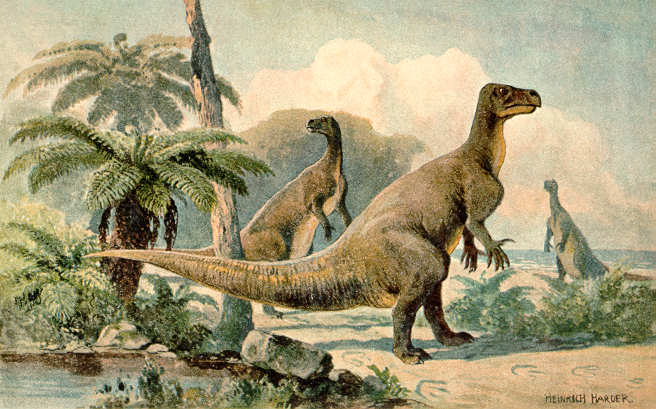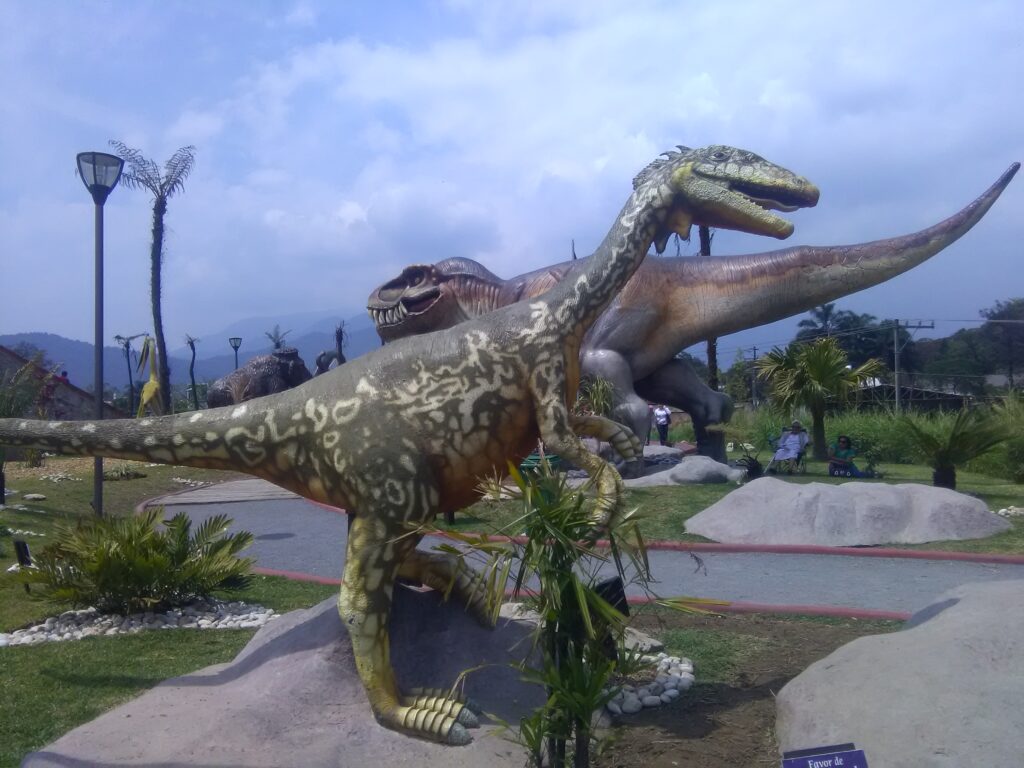In the quiet countryside of Sussex, England, in 1822, a seemingly insignificant discovery would alter the course of scientific understanding forever. Mary Ann Mantell, while accompanying her husband Gideon on a country walk, spotted something unusual glinting among the rocks—a fossilized tooth unlike anything previously documented. This single tooth would become the first scientifically described dinosaur fossil, leading to the naming of Iguanodon and triggering a seismic shift in how humans understood Earth’s history. The identification of this tooth marked the beginning of dinosaur paleontology as a scientific discipline and forced a dramatic reconsideration of the planet’s timeline. What follows is the remarkable story of how one fossilized tooth cast a shadow that stretches across two centuries of scientific discovery, challenging religious dogma and fundamentally reshaping our understanding of life on Earth.
The Fateful Discovery on a Country Road

The story of Iguanodon begins with an observant eye and a chance encounter. In 1822, Mary Ann Mantell accompanied her husband, Dr. Gideon Mantell, a country surgeon with a passionate interest in fossils, on a journey through Sussex. While Gideon attended to a patient, Mary Ann wandered along a country lane where road repairs had exposed layers of rock. It was here that she noticed something unusual—a tooth embedded in a piece of stone, weathered but distinctly different from anything commonly found. When she showed the specimen to her husband, he immediately recognized its significance, though he couldn’t immediately identify it. This seemingly modest discovery—a single tooth from an unknown animal—would become the catalyst for an entirely new field of scientific inquiry. The Mantells could never have imagined that their country stroll would lead to one of the most important paleontological discoveries in history, fundamentally challenging the established timeline of Earth’s existence.
Gideon Mantell’s Quest for Answers
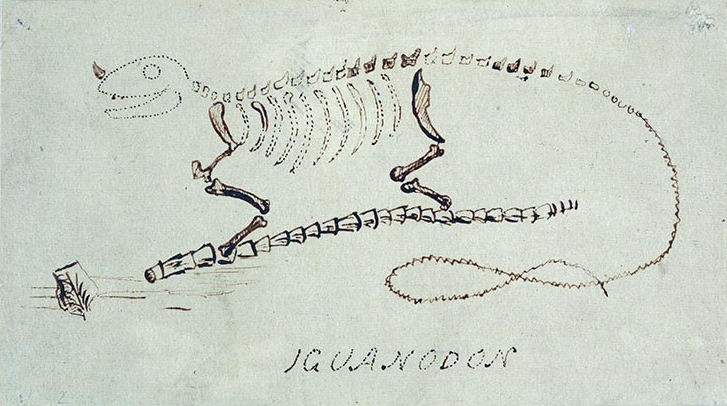
Following the discovery of the mysterious tooth, Gideon Mantell embarked on a determined scientific quest that would consume years of his life. As a provincial doctor without formal scientific training or powerful connections, Mantell faced significant obstacles in his pursuit of answers. He traveled extensively throughout England, carrying the fossil tooth to museums and experts, seeking confirmation of his growing suspicion that the tooth belonged to a previously unknown giant reptile. Most scientists dismissed his theories outright. Even when Mantell presented his findings to the Royal Society, the scientific establishment largely rejected his conclusions, with many suggesting the tooth simply belonged to a fish or mammal. Undeterred, Mantell continued his research, comparing the fossil to the teeth of existing reptiles at the Royal College of Surgeons. His breakthrough came when he observed similarities between the fossil tooth and those of modern iguanas, though on a vastly different scale. Mantell’s persistence in the face of establishment skepticism exemplifies the tireless pursuit of truth that drives scientific progress.
Naming a New Kind of Creature

After years of careful study and comparison, Mantell formally named his discovery Iguanodon, meaning “iguana tooth,” in 1825. The name reflected the similarity he had observed between the fossil tooth and the teeth of modern iguanas, though the Iguanodon’s tooth was twenty times larger than its modern counterpart. This naming represented more than just scientific classification—it was the first formal recognition of what would later be understood as a dinosaur. Mantell estimated that the complete Iguanodon would have measured approximately 60 feet long, making it a creature of unprecedented size in the known fossil record. The scientific paper in which Mantell introduced Iguanodon to the world presented compelling evidence that massive reptiles had once dominated Earth’s landscapes long before human existence. While many scientific concepts evolve gradually, the naming of Iguanodon represents a definitive moment when humanity’s understanding of prehistoric life fundamentally changed, introducing the concept of truly giant reptiles that had completely disappeared from Earth.
Challenging the Prevailing Worldview
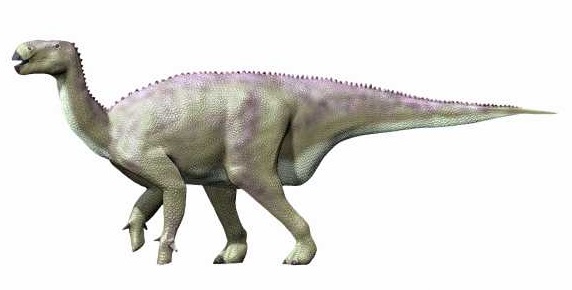
The identification of Iguanodon struck at the heart of prevailing 19th-century beliefs about Earth’s history. In 1822, most educated Europeans and Americans adhered to a biblical timeline that suggested Earth was only a few thousand years old, with all creatures created simultaneously and remaining essentially unchanged. The very existence of Iguanodon—extinct and unlike any living creature—directly challenged this narrative. If God had created all animals perfectly, why would some no longer exist? The massive size of Iguanodon raised further questions about why such impressive creatures had disappeared while seemingly less significant animals survived. These questions created profound theological and philosophical dilemmas for 19th-century thinkers. The fossil evidence began to suggest that Earth had a much longer, more complex history than previously imagined, with entire ecosystems appearing and disappearing over vast time periods. Iguanodon thus became not just a scientific curiosity but a philosophical challenge to fundamental beliefs about creation, extinction, and humanity’s place in natural history.
The Birth of Dinosaur Paleontology

While Mantell’s Iguanodon was not the first fossil reptile discovered, it played a critical role in establishing dinosaur paleontology as a scientific discipline. In 1842, British anatomist Richard Owen reviewed the growing collection of unusual reptile fossils, including Iguanodon, Megalosaurus, and Hylaeosaurus, and recognized they shared distinctive anatomical features that set them apart from other reptiles. Owen coined the term “Dinosauria” (meaning “terrible lizards”) to classify this group, officially establishing dinosaurs as a distinct taxonomic category. The scientific recognition of dinosaurs triggered a wave of expeditions and discoveries throughout Europe and North America. Museums began assembling dinosaur skeletons, capturing public imagination and spurring further research funding. Universities established paleontology departments dedicated to understanding these extinct creatures and their world. From that single tooth found on a country lane grew an entire scientific discipline that continues to evolve and expand today, employing thousands of researchers worldwide and continuously refining our understanding of Earth’s distant past through increasingly sophisticated methods and technologies.
The Crystal Palace Dinosaurs: Iguanodon Goes Public
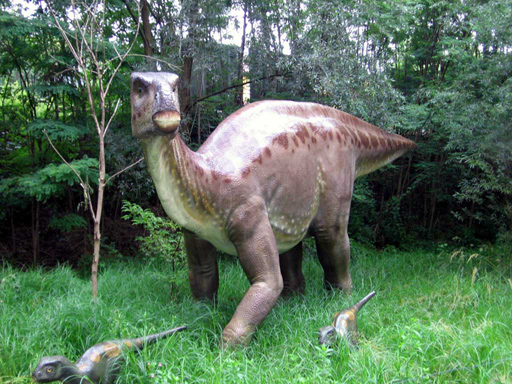
Perhaps no event better illustrates Iguanodon’s impact on Victorian society than the creation of the Crystal Palace dinosaur sculptures in 1854. Following the Great Exhibition of 1851, the Crystal Palace was relocated to Sydenham Hill in London, where sculptor Benjamin Waterhouse Hawkins was commissioned to create life-sized models of prehistoric animals to educate and entertain the public. Iguanodon featured prominently among these sculptures, representing one of the first attempts to visualize extinct dinosaurs in three dimensions. The Crystal Palace Iguanodon differed dramatically from modern reconstructions, depicted as a heavy, quadrupedal beast with a horn on its nose (what we now know was a thumb spike). Despite these inaccuracies, the sculptures created a sensation, introducing dinosaurs to the general public for the first time. Queen Victoria and Prince Albert themselves attended a dinner party hosted inside the unfinished Iguanodon model on New Year’s Eve 1853, symbolically placing the British monarchy’s stamp of approval on this new scientific frontier. The Crystal Palace dinosaurs, which still stand today as protected monuments, demonstrate how quickly Iguanodon transitioned from scientific discovery to a cultural phenomenon.
Evolving Understanding: Iguanodon Through Time
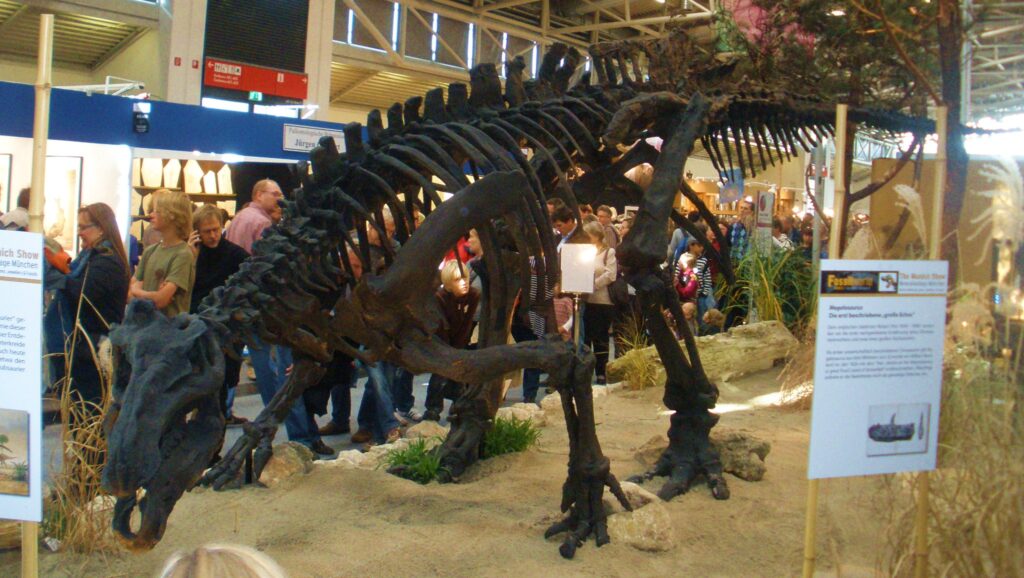
Few prehistoric creatures have undergone as many scientific reinterpretations as Iguanodon, making it a perfect case study in how paleontological knowledge evolves. Mantell’s initial reconstruction portrayed Iguanodon as a massive, quadrupedal creature resembling a scaled-up iguana. By the late 19th century, discoveries led to revisions suggesting Iguanodon could adopt both bipedal and quadrupedal postures. The famous 1878 discovery of multiple complete Iguanodon skeletons in a Belgian coal mine at Bernissart provided substantial new evidence, revealing that what Mantell had thought was a horn on the creature’s nose was a modified thumb spike. Throughout the 20th century, continuing research gradually transformed Iguanodon from a lumbering reptile to a more dynamic, adaptable dinosaur capable of various postures and movements. Most recently, taxonomic revisions have split what was once considered “Iguanodon” into several distinct genera, with true Iguanodon now recognized as just one member of a diverse family of similar dinosaurs. Each revision of Iguanodon reflects not just new fossil evidence but evolving methods and technologies in paleontology, from comparative anatomy to bone histology and biomechanical modeling.
The Geological Significance: Dating a Dynamic Earth
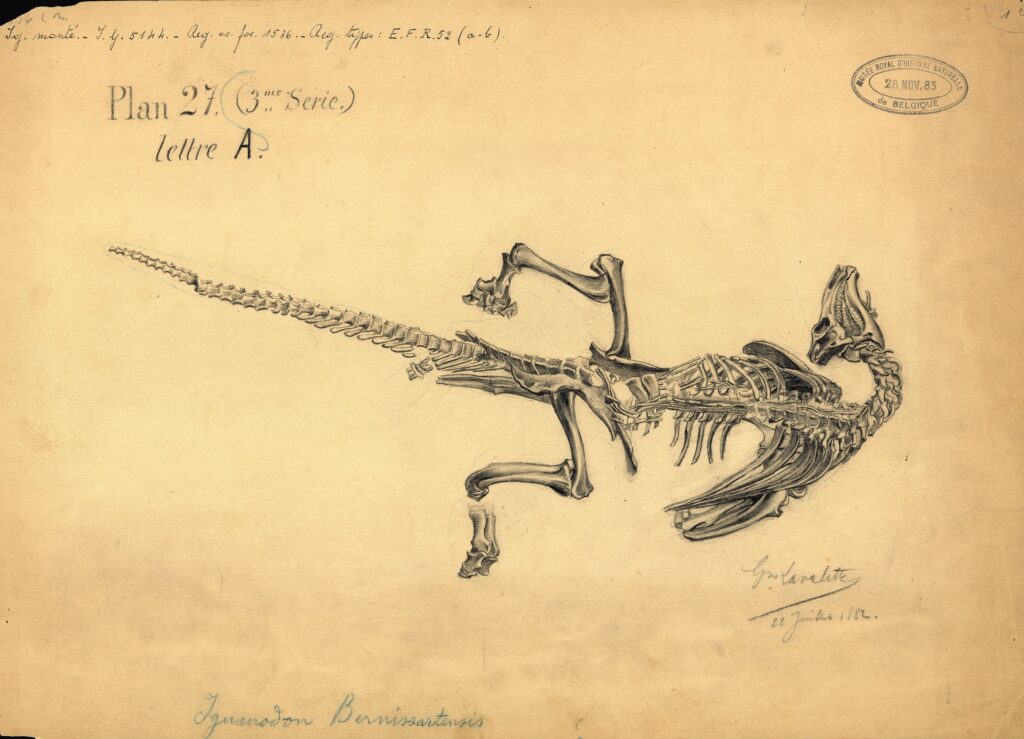
Beyond its importance to biological understanding, Iguanodon played a crucial role in developing geological concepts that remain fundamental today. The rock formation where the original tooth was discovered—the Wealden Group—became a key reference point in establishing the Early Cretaceous period, approximately 125 million years ago. The recognition that specific types of fossils consistently appeared in certain rock layers helped solidify the principle of faunal succession, a cornerstone of biostratigraphy. Geologists realized they could use Iguanodon fossils and their contemporaries to identify and correlate rock formations across wide geographical areas, even when those formations looked different mineralogically. This understanding contributed significantly to developing the geological time scale that modern science still uses, with refinements. The dating of Iguanodon-bearing rocks fundamentally challenged the prevailing young-Earth timeline, providing tangible evidence that Earth’s history extended far beyond human record-keeping. By establishing that distinct ecosystems had existed in succession over immense periods, Iguanodon helped transform geology from a descriptive science of rocks into a historical science documenting Earth’s dynamic past.
Iguanodon’s Ecological Role Revealed
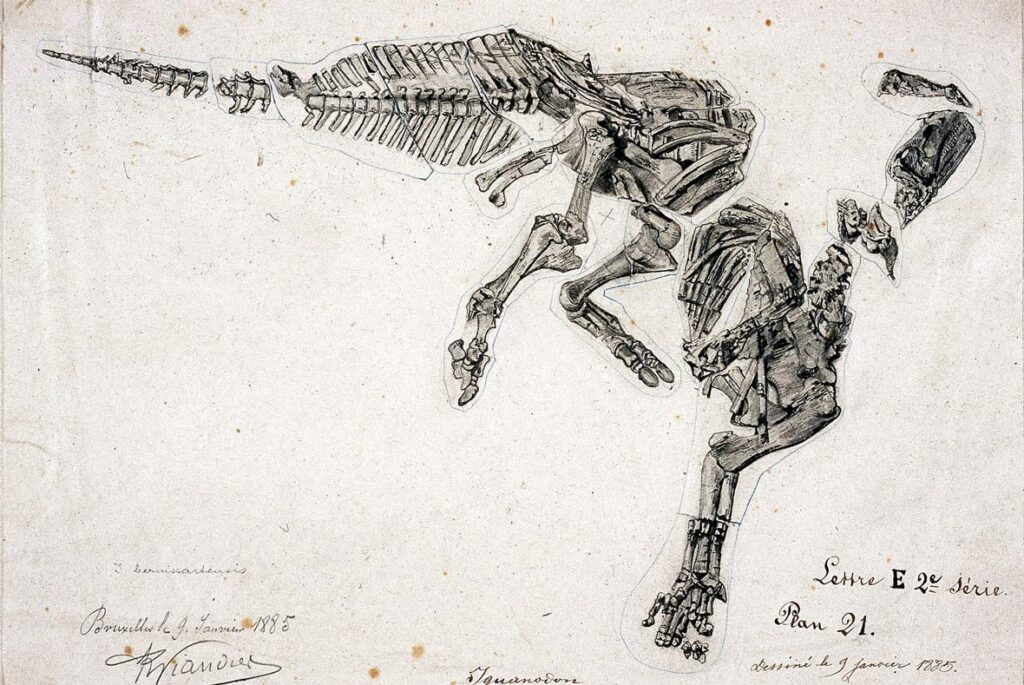
Modern paleontological research has provided increasingly detailed insights into Iguanodon’s biology and ecological significance within Early Cretaceous ecosystems. Standing approximately 10 feet tall at the hip and measuring up to 33 feet long, Iguanodon was a medium-to-large herbivore that likely browsed on cycads, conifers, and early flowering plants that were beginning to diversify during this period. Its distinctive dental battery—rows of teeth constantly being replaced as they wore down—represented an evolutionary innovation for processing tough plant material efficiently. The thumb spike that was initially misinterpreted as a nose horn likely served multiple functions, possibly including defense against predators like the contemporary theropod Neovenator, food gathering, or social displays. Analysis of multiple specimens suggests Iguanodon may have traveled in herds, providing protection against predators and potentially engaging in coordinated seasonal migrations. Iguanodon’s widespread fossil distribution across what is now Europe indicates it was highly successful, occupying a similar ecological niche to modern large herbivores like elk or moose—versatile plant-eaters adapting to varied environments. This ecological understanding transforms Iguanodon from merely an unusual fossil specimen into a living creature with complex behaviors and ecological relationships.
Personal Tragedy Amidst Scientific Triumph
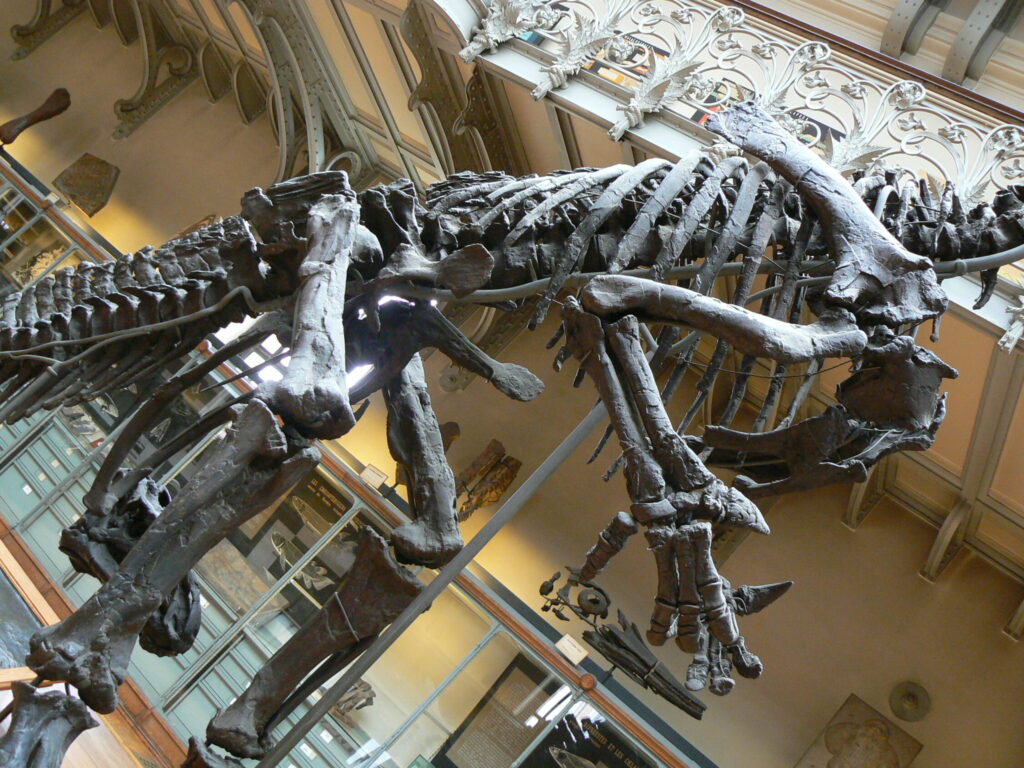
The story of Iguanodon is inseparable from the personal tragedy of its discoverer, Gideon Mantell, whose scientific contributions came at tremendous personal cost. Despite his groundbreaking work, Mantell never received a prestigious scientific appointment, remaining a country doctor who conducted paleontological research in his spare time. His obsession with fossils strained his marriage to breaking point, eventually leading to divorce—a scandalous and socially damaging outcome in Victorian England. Financial troubles forced Mantell to sell his fossil collection, including many of his prized Iguanodon specimens, to the British Museum. Adding to his troubles, renowned anatomist Richard Owen, who had established himself as Britain’s leading paleontologist, frequently belittled Mantell’s work and even attempted to take credit for some of his discoveries. In 1841, a carriage accident left Mantell with a debilitating spinal injury that caused chronic pain for the remainder of his life. When Mantell died in 1852, he could not have known that his discovery would eventually be recognized as one of the most significant in paleontological history, or that Iguanodon would become one of the most famous dinosaurs in the world.
Iguanodon in Popular Culture
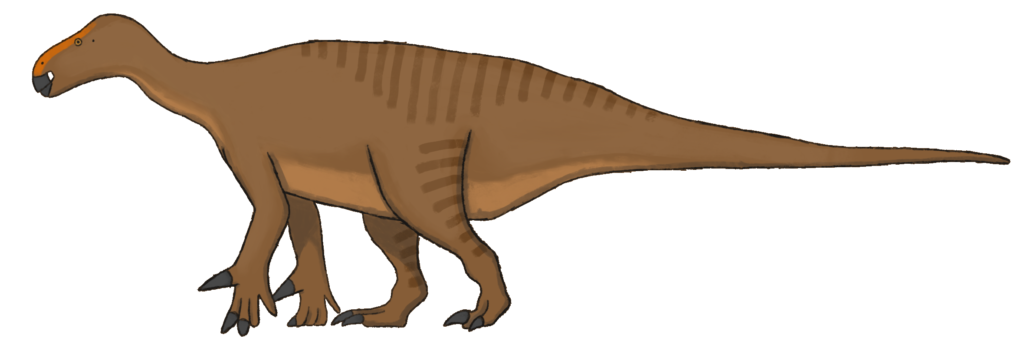
Few prehistoric creatures have maintained such a consistent presence in popular culture as Iguanodon, appearing in virtually every medium that portrays dinosaurs. Arthur Conan Doyle featured Iguanodons prominently in his 1912 novel “The Lost World,” helping cement the dinosaur’s place in popular imagination. When Walt Disney produced “Fantasia” in 1940, Iguanodon appeared in the groundbreaking “Rite of Spring” sequence depicting Earth’s prehistoric past. The dinosaur has appeared in countless books, television programs, and films, including the character Aladar in Disney’s 2000 animated feature “Dinosaur.” Museum displays featuring Iguanodon remain consistently popular, with the famous Bernissart specimens at Belgium’s Royal Institute of Natural Sciences drawing visitors from around the world. Perhaps most telling of Iguanodon’s cultural impact is its familiar presence in children’s media—from educational programming to toys and games. This cultural ubiquity has made Iguanodon one of the few dinosaurs many people can name and recognize, alongside more famous counterparts like Tyrannosaurus and Triceratops. The continuing presence of Iguanodon in popular media ensures that each new generation encounters this pivotal dinosaur and, through it, the foundations of paleontological science.
The Legacy of a Single Tooth
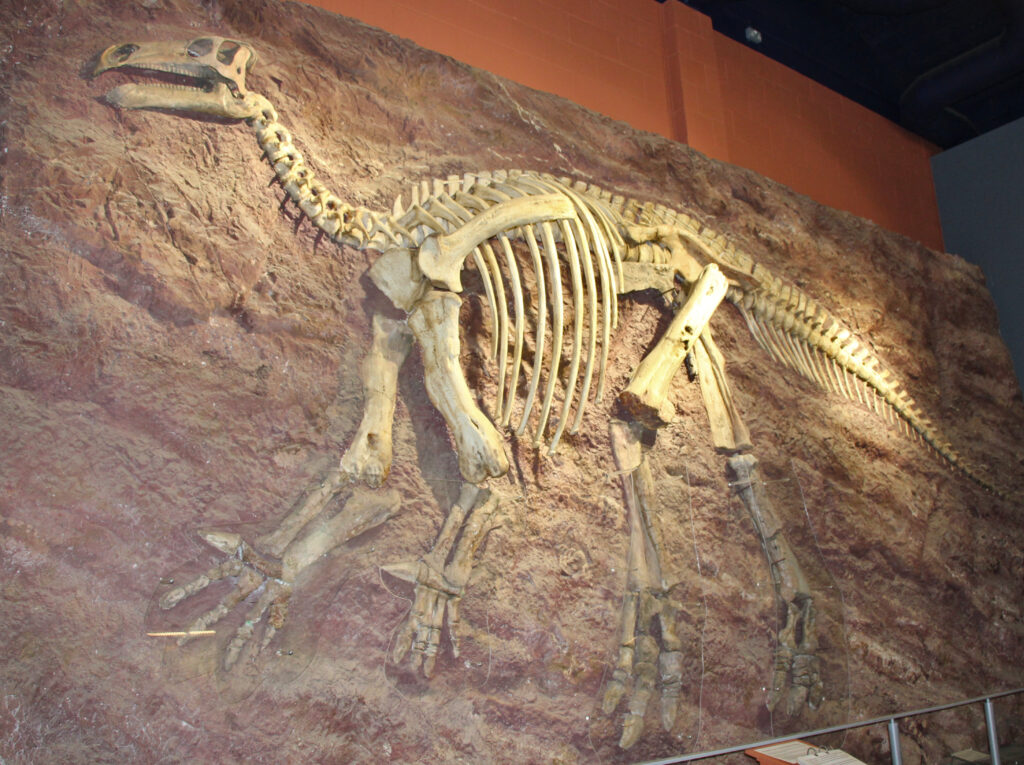
The cascading scientific and cultural consequences flowing from Mary Ann Mantell’s discovery illuminate how singular findings can transform human knowledge. That single tooth led directly to the scientific recognition of dinosaurs, which in turn necessitated a radical reconsideration of Earth’s timeline and development. The existence of dinosaurs provided compelling evidence for biological evolution, supporting Charles Darwin’s revolutionary theory, published three decades after Iguanodon was named. Paleontological methods developed to study Iguanodon established techniques still employed by researchers today. Beyond science, Iguanodon helped create entirely new forms of public engagement with natural history through museum displays, illustrations, and educational programs. The tooth’s discovery also demonstrated the potential for non-academic contributors to make significant scientific discoveries, setting a precedent for citizen science that continues today. Perhaps most profoundly, Iguanodon helped transform humanity’s understanding of our planet from a static, recently created world to a dynamic sphere with a deep history extending millions of years before human existence. Few scientific discoveries can claim such far-reaching impacts across so many domains of human knowledge and culture.
Modern Research: New Questions About an Old Dinosaur
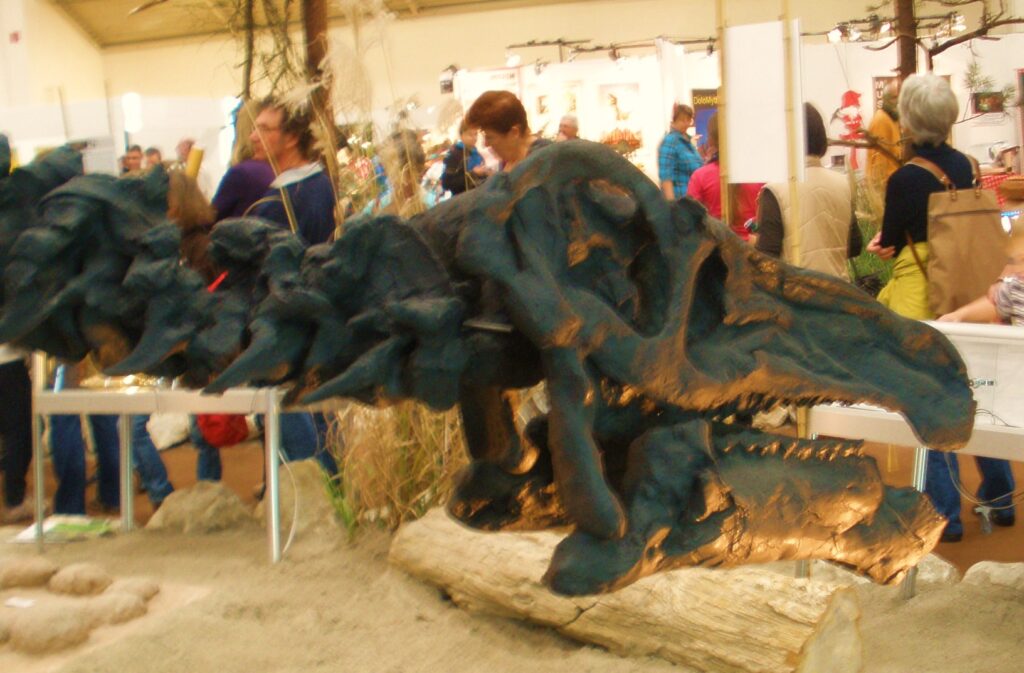
Nearly two centuries after its discovery, Iguanodon continues to generate new scientific questions and insights. Recent research using stable isotope analysis of fossil teeth has provided clues about Iguanodon’s diet and migratory patterns, suggesting seasonal movements between coastal and inland environments. Advanced biomechanical modeling has allowed paleontologists to better understand how Iguanodon moved, indicating it could reach speeds of approximately 15 miles per hour when running bipedally. Studies of bone histology—the microscopic structure of fossilized bone—have revealed growth patterns suggesting Iguanodon reached sexual maturity around eight years of age and had a maximum lifespan of approximately 30 years. Paleontologists continue debating the function of Iguanodon’s distinctive thumb spike, with new theories suggesting it may have played a role in intraspecific competition for mates. The discovery of exceptionally preserved Iguanodon skin impressions has provided insights into its external appearance, indicating a scaly covering rather than feathers or proto-feathers found in some other dinosaur groups. These ongoing investigations demonstrate that even well-studied dinosaurs continue to yield new information as scientific methods advance, ensuring Iguanodon remains relevant to contemporary paleontological research nearly 200 years after its initial discovery.
Conclusion

The story of Iguanodon exemplifies how science advances—not always through dramatic paradigm shifts, but sometimes through the careful observation of a single anomalous specimen. From Mary Ann Mantell’s chance discovery of a tooth to today’s sophisticated 3D models of Iguanodon locomotion, this dinosaur has repeatedly transformed our understanding of prehistoric life. The shadow cast by that single fossilized tooth has stretched across two centuries, fundamentally altering humanity’s perception of Earth’s history and our place within it. As we continue to uncover new details about Iguanodon and its world, we are reminded that scientific knowledge is never truly complete—each discovery opens new questions and possibilities. Perhaps the most profound legacy of Iguanodon is how it demonstrates that even the most established truths about our world remain open to revision when confronted with compelling evidence.

